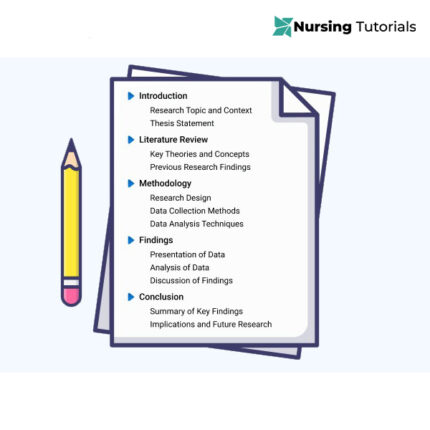Solution : WGU D025 AWM3 Task 2
Executive Summary
This paper has synthesised all the sections provided by the WGU grading rubric for this task.
1. Introduction
-
Overview of health disparities in the United States.
-
Specific focus on Queens, NY — limited access to healthcare services.
-
Discussion of socioeconomic and demographic influences on health outcomes.
-
The role of Advanced Practice Nurses (APNs) in community health improvement.
-
Use of American Association of Colleges of Nursing (AACN) competencies as a framework.
-
Importance of interprofessional collaboration.
2. Advanced Professional Nurse as Advocate
Competency 3 – Management of Population Health
- Assessing population health data.
- Identifying community priorities.
- Developing culturally and linguistically appropriate interventions.
Competency 8 – Engaging in Effective Partnerships
- Building collaborations with stakeholders.
- Promoting mutual accountability and sustainable health solutions.
-
The role of nurses as policy advocates for healthcare access.
3. Self-Assessment of Interprofessional Competencies
-
Based on the Interprofessional Professionalism Collaborative framework.
-
Self-evaluation categories and reflections:
-
Communication
-
Strengths: strong verbal/written communication, active listening.
-
Improvement: awareness of nonverbal cues in multicultural settings.
-
-
Respect and Integrity
-
Maintaining professionalism and trust in team settings.
-
-
Teamwork
-
Collaboration across disciplines to improve care quality.
-
-
Accountability
-
Personal responsibility for professional conduct.
-
-
Excellence
-
Continuous learning and improvement in practice.
-
-
4. Advocacy and Policy Recommendation
-
Identification of policy gaps: shortage of primary care physicians in Queens.
-
Proposed policy initiative: improving access through expanded APN practice authority and community-based clinics.
-
Collaboration with state and local health departments.
-
Policy alignment with Healthy People 2030 goals.
5. Implementation and Interprofessional Collaboration
-
Steps to engage community stakeholders.
-
Partnerships with healthcare organizations and educational institutions.
-
Interprofessional teamwork: physicians, nurses, social workers, and public health officials.
-
Strategies for advocacy:
-
-
Public awareness campaigns.
-
Coalition building.
- Legislative lobbying.
-
6. Evaluation and Outcome Measurement
-
Metrics for evaluating policy impact:
-
Increased access to primary care.
-
Reduction in preventable emergency visits.
-
Improved patient satisfaction and health equity.
-
-
Long-term tracking and reporting using population-health data.
7. Conclusion
-
Reinforcement of the APN’s role in policy advocacy.
-
Importance of collaborative approaches for sustainable community health improvement.
-
Call for continued engagement of nursing professionals in health policy reform.
$75.00 Original price was: $75.00.$10.00Current price is: $10.00.
Solution : WGU D025 AWM3 Task 2
Advocating for Policy Change
Health disparities in the United States arise from various demographic, geographic, and socioeconomic factors. In Queens, NY, a significant health concern is the limited access to healthcare. Many residents lack access to essential primary care physicians, which negatively impacts their health and well-being. The absence of accessible primary care can lead to poorer health outcomes for the community and exacerbate socioeconomic strain. Advanced practice nurses can collaborate with other healthcare professionals to advocate for solutions to this pressing issue. The competencies established by the American Association of Colleges of Nursing (AACN) can guide these nurses in improving community health in Queens.
Additionally, leveraging interprofessional collaboration can enhance the effectiveness of health interventions. (NY State of Health.ny.gov (2022)
Advanced Professional Nurse as Advocate
Two competencies outlined by the American Association of Colleges of Nursing that are essential for improving population health by advanced professional nurses are Competency 3.1, Management of population health assesses population health data, identifying community priorities, and developing action plans to address health needs, often involving collaboration with other health professionals and stakeholders to implement culturally and linguistically responsive interventions. Competency 3.2 Engaging in effective partnerships is centered on the idea that effective population health initiatives require collaboration and partnerships among various stakeholders and emphasizes the importance of collaboration and mutual accountability to improve population health outcomes, including culturally and linguistically responsive communication. (American Association of Colleges of Nursing (2021)
Entry-level nurses and advanced practice nurses each play crucial and distinct roles in improving health outcomes. They bring unique skills and perspectives to the healthcare team, significantly impacting patient care and community well-being. Entry-level nurses primarily focus on providing basic individual patient care and implementing care plans. In contrast, advanced practice nurses possess specialized knowledge and skills that often involve independent decision-making and managing complex patient care.
When it comes to effective partnerships, entry-level nurses engage in direct patient care, assess health data, and identify patterns within populations. Advanced practice nurses, however, take a broader approach. They oversee the health of larger populations, foster collaborations, challenge barriers, and continually evaluate the effectiveness of these partnerships to promote health equity. In this capacity, they act as leaders, educators, and advocates (AACN, 2021).
Furthermore, advanced practice nurses have a responsibility not only to the health of individuals but also to the health of society (DeNisco, S., 2024).
Interprofessional Professionalism Assessment
Interpersonal skills are essential for a team to function effectively. The Interprofessional Professionalism Collaborative has developed an assessment with six categories: communication, respect, altruism and caring, excellence, ethics, and accountability. This assessment can be used to evaluate a professional’s demonstration of professionalism in interactions with team members (Interprofessional Professionalism Collaborative, n.d.a., p. 1). After completing the self- assessment, I reviewed my results and identified both my strengths and areas for improvement.
- Communication: Communication transfers thoughts, information, and opinions
Strength: I demonstrate strong verbal and written communication skills with both patients and colleagues. I strive to embrace active listening to truly grasp their concerns and needs. By fully engaging with what they’re saying, I can foster a deeper understanding and connection.
Opportunity for Improvement: Queens is comprised of various nationalities and cultures. I can gain a better understanding of the nonverbal cues used within each population.
- Respect: Respect is the appreciation of another person’s dignity, treating them as valuable
Strength: I demonstrate respect for the culturally diverse backgrounds of patients and team members. I recognize that individuals and groups come from various backgrounds and belief systems.
Opportunity for Improvement: I can improve my internal awareness of personal biases to allow every team member to feel valued.
- Altruism and Caring: Behavior that shows corn and empathy as well as consideration of the needs and values of others.
Strength: I would demonstrate concern for patient welfare and advocate for their needs. Opportunity for Improvement: I understand that this work is involved, and I should establish
self-care practices to prevent burnout.
- Excellence: Providing the highest quality of care following best practices
Strength: I often seek professional growth and Improvement opportunities, such as taking classes and enrolling in a master’s level nursing program.
Opportunity for Improvement: I can improve my knowledge-sharing efficiency across disciplines, enhancing team performance. I need to recognize that my team members do not have the nursing background that I have.
- Ethics: Being aware of the moral fitness of a decision with the delivery of care
Strength: I am aware that ethical practice needs to remain evident in the decision-making processes used in patient care and team collaboration.
Opportunity for Improvement: I will work with the team to develop strategies to navigate ethical dilemmas that may come about in team interactions.
- Accountability
Strength: Advanced professional nurses take responsibility for their actions and decisions. I will be held responsible for my communication and the actions I recommend.
Opportunity for Improvement: I should put effort into creating a culture of accountability within the interdisciplinary teams so that the team can generate improved outcomes
Interprofessional Team Development
FIVE STAGES OF INTERPROFESSIONAL TEAM DEVELOPMENT
- Forming
- Strategy: Establish Clear Goals and Roles
During the forming stage, team members learn about each other and clarify the team’s objectives and individual roles to help team members understand their purpose and expectations. The Advanced Practice Nurse (APN) can pave the way for success by establishing clear goals, expectations, and roles within the team. This ensures that each member understands their responsibilities in population health advocacy. For example, the APN may organize an initial meeting to clarify the specific health issues affecting the target population, such as improving access to healthcare in underserved communities, and define each member’s role in addressing these issues.
- Storming
- Strategy: Facilitate Open Communication and Conflict Resolution
In the storming stage, differences in opinions, priorities, or working styles may arise among team members. The APN (Advanced Practice Nurse) can enhance open communication by encouraging team members to express their concerns and perspectives in a respectful and structured manner. This approach helps to resolve conflicts and refocus the team on achieving their goals. Additionally, the APN can mediate conflicts and facilitate constructive discussions to ensure that everyone’s voice is heard while keeping the group aligned with its advocacy objectives. For instance, when disagreements arise over the best approach to advocate for a population health initiative, the APN can assist in navigating these differences by promoting compromise or guiding the team toward evidence-based solutions.
- Norming
- Strategy: Foster Collaboration and Shared Decision-Making.During the norming stage, the team builds trust and cooperative behaviors.
Click ” add to cart ” or “Buy now ” to access the entire solution.



